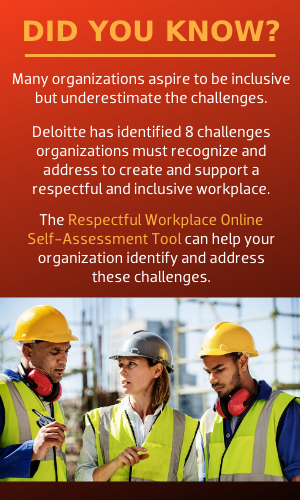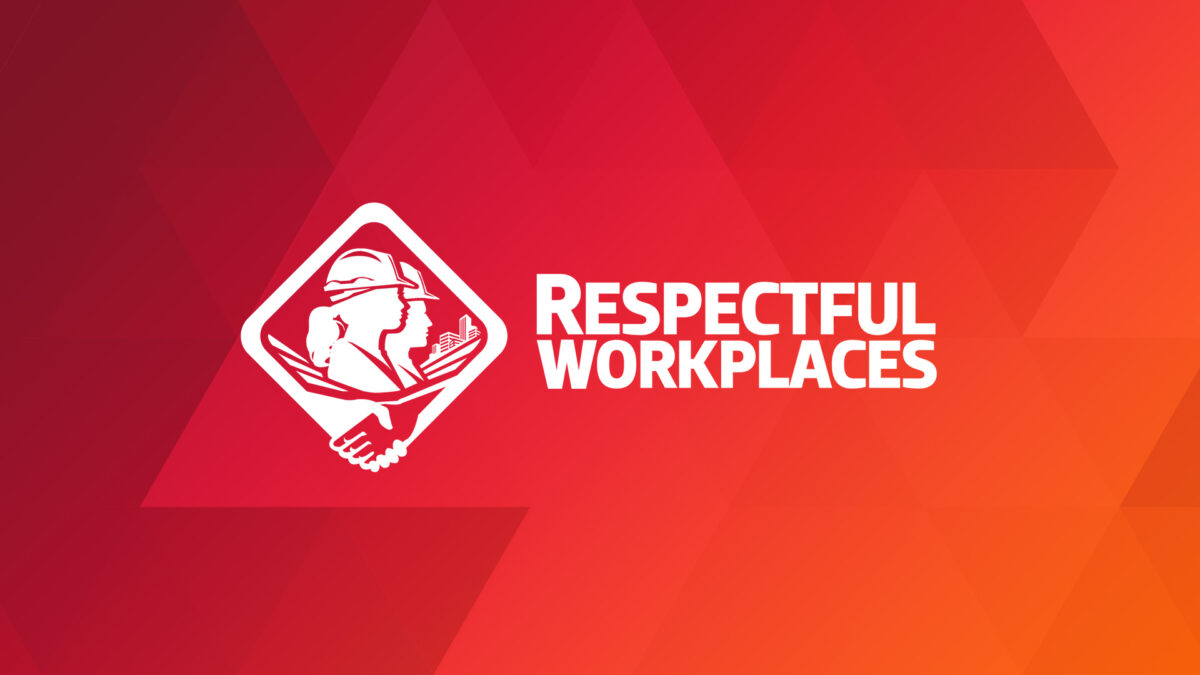Does your organization take a long-term view toward creating an inclusive workplace?

There is plenty of research showing that respectful and inclusive workplaces attract and retain workers from all applicant pools, such as those with different genders, backgrounds, and circumstances. This results in a workforce that is not only demographically diverse but also fosters diversity in thought, communication, and problem-solving styles. This diversity is associated with higher employee engagement, lower turnover, more innovation, and financial returns above national industry medians.
However, achieving the goal of retaining and promoting workers with different genders, backgrounds, and circumstances over the long term has proven to be a challenge for many organizations. In a global study, Deloitte found that 71% of organizations aspired to have an inclusive workplace culture, but maturity levels were very low.
In order to help accelerate the progress, Deloitte shared the findings from studies with approximately 50 organizations around the world representing more than one million workers.
They identify eight enduring, long-term challenges that organizations must recognize and address in order to create and support a respectful and inclusive workplace:
1. Diversity of thinking
It’s important for organizations to adopt a “diversity” mindset so that diversity in all its forms is welcomed. People of different genders, backgrounds, and circumstances bring change in many ways. For example, research has found that the presence in a team of someone with a different gender, background, and circumstance will cause the team to come to the meeting more prepared and to think through more options.
2. Diversity without inclusion is not enough
The term “diversity” describes a goal of including people of different genders, backgrounds, and circumstances in a workforce. However, if this is the only focus, it can often result in simply a numbers game. It says nothing about how welcome or valued workers feel over the long term.
3. Inclusive leaders cast a long shadow
Inclusive leadership is more than just being nice to people. It is broader and more intentional. Leaders in a modern and globalized world must adapt their behaviours and influence their surrounding workplace to address the needs of diverse talent, ideas, and even external stakeholders.
4. Middle managers matter
Historically, training for a new initiative usually focuses on executive leaders and front-line workers. However, creating and sustaining a respectful and inclusive workplace often requires complex, systemic change. Consequently, middle managers must be given the necessary level of training and support they need to adapt.
5. Rewire the system to rewire behaviours
Organizations must objectively analyze and re-think the processes and programs that by default are unintentionally resulting in discrimination. For example, recruitment by word of mouth can result in hiring people from limited applicant pools. To rewire the process, an organization would establish a standard process in which qualified people of different genders, backgrounds, and circumstances are included in the final panel of candidates.
6. Tangible goals make ambitions real
Tangible goals are objectives that allow an organization to measure its progress. For example, they can be goals that measure changes in attitude. They can also be numerical goals such as reducing turnover to a certain acceptable percentage among people of different genders, backgrounds, and circumstances. Without the ability to measure progress, even great ambitions cannot be realized.
7. Match the inside and the outside
As mentioned above, diversity should be a mindset, and this means understanding diversity in the context of a modern and globalized world. Organizations must welcome and support external stakeholders such as community groups, customers, and board members who represent a diversity of genders, backgrounds, and circumstances. When this outreach is authentic, it will support internal efforts with your workforce, and help to reinforce the diversity mindset.
8. Transform workplace culture
Finally, most significant and foundational to all of the above challenges is transforming the workplace culture. Creating and sustaining a respectful and inclusive workplace often requires changing attitudes, habits of behaviour, and systems of recruitment and promotion. This can feel threatening to the majority of workers and may result in many forms of resistance such as inertia, petty sabotage, and even outright refusal to cooperate (see Blog #42). Consequently, change toward greater inclusion requires more effort than many other business priorities. And yet it usually receives much less attention.
Organizations that recognize any of these eight challenges in their own workplaces could consider using the BuildForce Respectful Workplace Online Self-Assessment Tool. It will help management to change workplace culture as it addresses systemic discrimination, inclusive leadership, setting measurable goals, and outreach to diverse external stakeholders and much more.
For more info:
- Deloitte. “The Diversity and Inclusion Revolution: Eight Powerful Truths.” January 2018. See: www2.deloitte.com/us/en/insights/deloitte-review/issue-22/diversity-and-inclusion-at-work-eight-powerful-truths.html
Read from the beginning. Click here to start at Part 1.
What can an effective Respectful and Inclusive Workplace Program deliver?
- Become an employer of choice – attract, retain, and advance top talent from all sources of labour
- Unlock collaboration and innovation – create high-performing teams through diversity of thought and experience
- Build your brand – your organization will gain a competitive edge as a leader and innovator
Get started today!
The BuildForce Canada Online Respectful and Inclusive Workplace Toolkit includes:
- the Respectful Workplace Online Self-Assessment Tool to assist organization leadership in assessing their current situation and identifying where they may need to make changes
- the Respectful Workplace Policy Framework and Implementation Guide to assist organizations in creating and implementing a policy that supports a respectful and inclusive workplace
- the Respectful Workplace Online Training Course to train workers on how to create and support a respectful and inclusive workplace
- the online course Introduction to Understanding Systemic Racism: A Guide for Leaders and Managers
All the resources you need to create and support a respectful and inclusive workplace!

Respectful and Inclusive Workplaces
